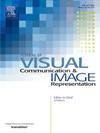Global–local prompts guided image-text embedding, alignment and aggregation for multi-label zero-shot learning
IF 2.6
4区 计算机科学
Q2 COMPUTER SCIENCE, INFORMATION SYSTEMS
Journal of Visual Communication and Image Representation
Pub Date : 2024-11-28
DOI:10.1016/j.jvcir.2024.104347
引用次数: 0
Abstract
Multi-label zero-shot learning (MLZSL) aims to classify images into multiple unseen label classes, which is a practical yet challenging task. Recent methods have used vision-language models (VLM) for MLZSL, but they do not well consider the global and local semantic relationships to align images and texts, yielding limited classification performance. In this paper, we propose a novel MLZSL approach, named global–local prompts guided image-text embedding, alignment and aggregation (GLP-EAA) to alleviate this problem. Specifically, based on the parameter-frozen VLM, we divide the image into patches and explore a simple adapter to obtain global and local image embeddings. Meanwhile, we design global-local prompts to obtain text embeddings of different granularities. Then, we introduce global–local alignment losses to establish image-text consistencies at different granularity levels. Finally, we aggregate global and local scores to compute the multi-label classification loss. The aggregated scores are also used for inference. As such, our approach integrates prompt learning, image-text alignment and classification score aggregation into a unified learning framework. Experimental results on NUS-WIDE and MS-COCO datasets demonstrate the superiority of our approach over state-of-the-art methods for both ZSL and generalized ZSL tasks.
全局-局部提示引导图像-文本嵌入,对齐和聚合多标签零射击学习
多标签零次学习(Multi-label zero-shot learning, MLZSL)旨在将图像分类为多个看不见的标签类,这是一项实用但具有挑战性的任务。最近的方法对MLZSL使用了视觉语言模型(VLM),但它们没有很好地考虑全局和局部语义关系来对齐图像和文本,从而产生有限的分类性能。在本文中,我们提出了一种新的MLZSL方法,称为全局-局部提示引导图像-文本嵌入,对齐和聚合(GLP-EAA)来缓解这个问题。具体而言,基于参数冻结VLM,我们将图像分割成小块,并探索一种简单的适配器来获得全局和局部图像嵌入。同时,我们设计了全局局部提示符来获取不同粒度的文本嵌入。然后,我们引入全局-局部对齐损失来建立不同粒度级别的图像-文本一致性。最后,我们汇总全局和局部分数来计算多标签分类损失。聚合分数也用于推理。因此,我们的方法将提示学习、图像-文本对齐和分类分数聚合集成到一个统一的学习框架中。在NUS-WIDE和MS-COCO数据集上的实验结果表明,我们的方法在ZSL和广义ZSL任务上都优于最先进的方法。
本文章由计算机程序翻译,如有差异,请以英文原文为准。
求助全文
约1分钟内获得全文
求助全文
来源期刊

Journal of Visual Communication and Image Representation
工程技术-计算机:软件工程
CiteScore
5.40
自引率
11.50%
发文量
188
审稿时长
9.9 months
期刊介绍:
The Journal of Visual Communication and Image Representation publishes papers on state-of-the-art visual communication and image representation, with emphasis on novel technologies and theoretical work in this multidisciplinary area of pure and applied research. The field of visual communication and image representation is considered in its broadest sense and covers both digital and analog aspects as well as processing and communication in biological visual systems.
 求助内容:
求助内容: 应助结果提醒方式:
应助结果提醒方式:


